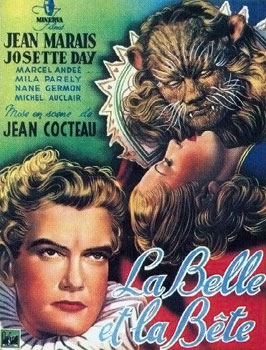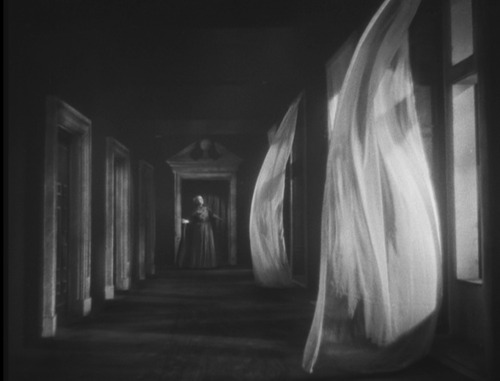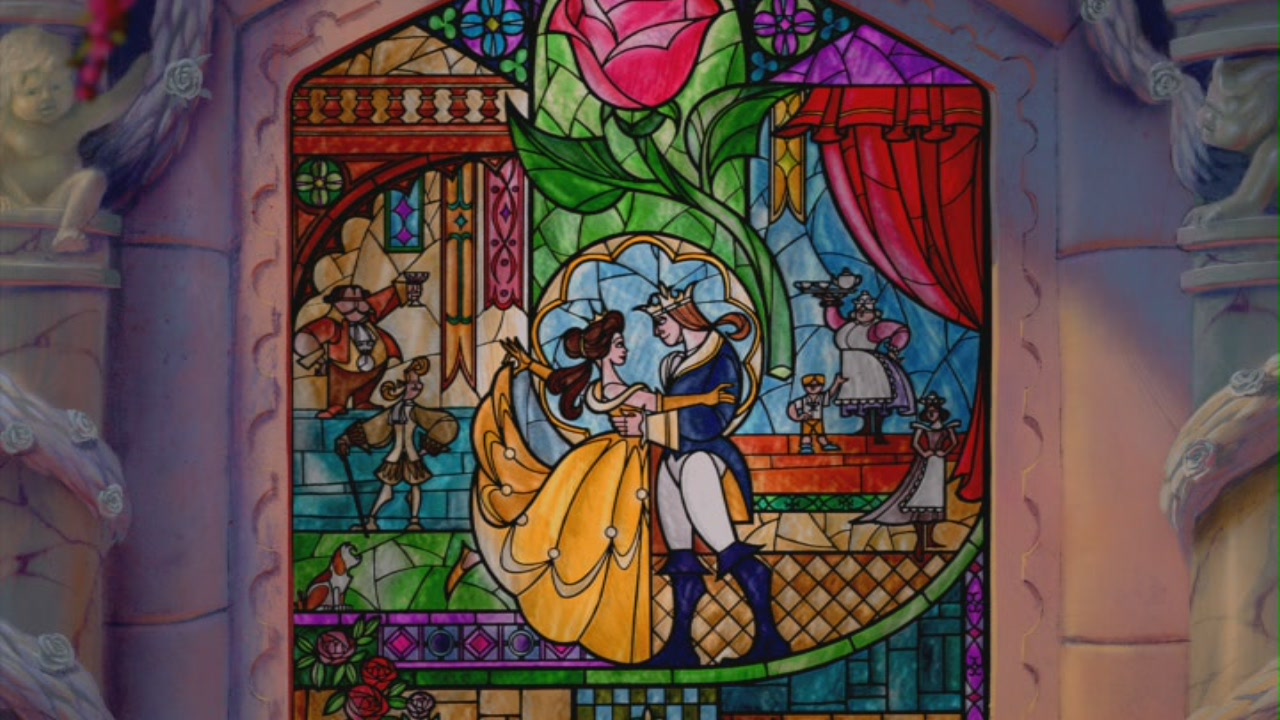Jerry Griswold claims in his The Meanings of Beauty and the Beast: A Handbook that the two major film versions of "Beauty and the Beast", by Jean Cocteau (1946) and Disney (1991), "essentially present it as a gay version." When I read that I wondered how in the world you could conclude that from seeing the movies. With all the modern versions challenging society's views of gender roles and sexuality, these movies seem to be some of the more traditional ways of telling the story.
While I don't think a gay advocacy is obvious from plot points themselves, there is some very telling information about the creators of the films I had never heard before.
Griswold provides movie summaries; for the purpose of this post I'll just assume you're familiar with the movies' basic plots.
Cocteau: Griswold claims that Cocteau makes an effort to show a negative correlation with male heterosexuality. For example, he amplifies the horrific/creepy elements of the story. The tale is often thought to portray the anxieties a woman faces before intimacy with a man, so therefore to increase the horror is to indicate that the horror of heterosexual intimacy never really goes away. Also, when Belle sees the Beast outside her bedroom just after a hunt, paws smoking, and he is ashamed, that supposedly means that "what is ugly and repulsive...are male sexual desires and giving into them."
I think the logic there is pretty weak. But what I do find interesting is the ending. I was always bothered by the fact that the Beast turns into the Avenant character, who is clearly a villain. Griswold seems the whole ending scene as intentionally ridiculous-from the cheesy lines to the costumes. Audiences tend to be disappointed at the ending, and Griswold thinks this intentional, which I think makes more sense than taking the ending at face value. Cocteau may have been making light of the traditional storybook ending, man + woman = happily ever after.
Also fascinating-Cocteau was suffering from several "painful and disfiguring skin problems" during the shooting of the film, including boils, carbuncles, eczema, and impetigo, so he may have found himself relating to the Beast physically. Not only was he homosexual, but his lover was Jean Marais, who played Avenant/the Prince. Definitely changes how you view the film to know that.
Disney: Throughout the film, Belle's character is looked upon suspiciously by the other townspeople, and their reactions are close to reactions to gay people: "strange," "funny," "peculiar," "odd," "very different from the rest of us." Now on the one hand, I wouldn't connect that to people's reactions to homosexuals specifically because pretty much anyone who's been through puberty can relate to feeling out of place and awkward in some way and the media definitely knows that. So many popular movies/books/tv shows revolve around a main character who is awkward and unpopular, and therefore everyone instantly feels a connection. Of course it's perfectly appropriate to read into the gay experience as one way to relate to Belle, I'm just not sure if I conclude with Griswold that the Disney version is "essentially a gay version." Although the lyricist, Howard Ashman, was gay, so we can assume he had experienced some of the same misunderstandings as Belle.
In his analysis of both films, Griswold sees the chauvinist male characters (Avenant and Gaston) as messages about the dangers of male heterosexuality. Sure there's dangers, but that doesn't mean all male heterosexuals are dangerous.
Griswold sees the Beast and Gaston as inverses of the other. One is essentially good at heart and ugly in appearance, the other handsome in appearance but evil at heart. Echoing the Cocteau film, the Beast can't transform into the Prince until after Gaston dies. Griswold suggests interpreting the title "Beauty and the Beast" to being about Gaston and the Beast, which is a very interesting thought. He even says that the Beast is in danger of becoming Gaston-abusing his power and masculinity, which reminds me of Snow White and how she is in danger of becoming her stepmother, as many people have recently been interpreting that fairy tale.
So while "Beauty and the Beast" won't pop up in your Netflix cue under the gay and lesbian film sub genre, the Otherness of the Beast can definitely be a way to see the Otherness of the gay community. I have to admit this is not an area I feel qualified to write about-I am very attracted to my fiancé Tony and none of my close friends are gay, but I'd be interested to hear what this fairy tale means to people who are ostracized for being gay, if they feel a special connection to the story.
And as always there's much more in the book, this is just a summary of a few main points, I highly recommend it to any BATB fans.






This reminds me of the theory that Harry Potter's Lupin (and werewolves in general) is a stand in for the gay community. He is an outsider and part of a community that society doesn't accept and he judged harshly for being so.
ReplyDeleteI think that sometimes, there's a fine line for thinking that the outsider in literature is allegorically gay, but I also think that there's a lot to work with here in the Beauty and the Beast tale. After all, it is a very gender and sex focused tale. Thank you for bringing it up! I find it fascinating :)
I hadn't heard that theory about Lupin! See it baffles me because it never would have occurred to me that Lupin represented the gay community...but is that just because I'm not gay and don't understand what it's like?
ReplyDeleteI'm very skeptical of some of Griswold's theorizing, although I recognize the validity of his points regarding Marais and Cocteau, his analysis of the Disney film hinges on a deeply flawed understanding of Ashman's involvement on the project -- and, from his writing, it's very clear that Griswold has no real grasp on how animated films, and this animated film in particular, were and are produced. Ashman was a lyricist, and a very good one. He was not involved in developing the script (primarily Linda Woolverton) or the story (a dedicated team of story artists). While he was openly gay, and an important part of what became the film, he would have had, at best, minor input at the discretion of the directors. He did not, as Griswold asserts "basically rewrite the movie".
ReplyDeleteThis comment has been removed by a blog administrator.
ReplyDeleteMegan-you make excellent points. I kind of buy the Cocteau theory, because Cocteau was the creator and the ending always seemed disappointing to me anyway. But as you said, Ashman at most may have inserted lines with private meaning to him. The mere fact that the Disney version ends happily with a man and woman in love doesn't really allow for too much of a hidden gay agenda going on with the same characters.
ReplyDeleteGay readings of this story are valid, but the author does give Ashman more credit than he merits. Animation at Disney has always been extremely collaborative. No one there is an "auteur" like Cocteau.
ReplyDelete